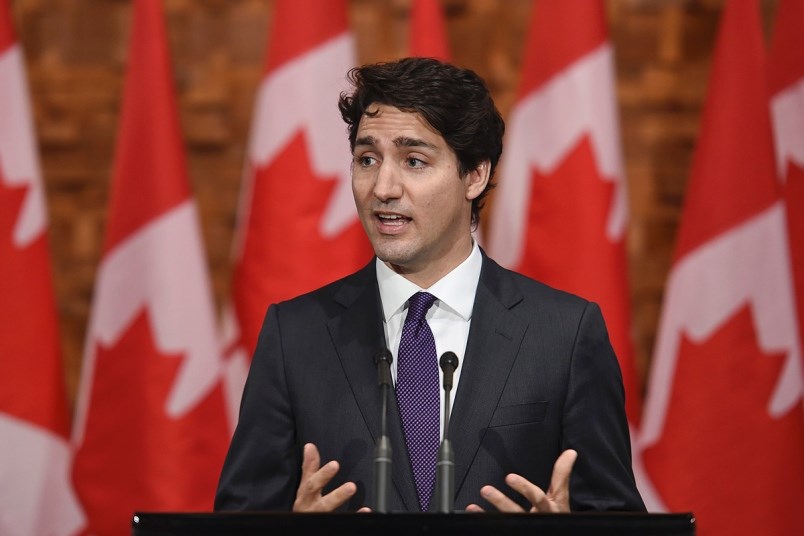“Gang colours include clothing, accessories, or tattoos of a specific color or colors that represent an affiliation to a specific gang or gang branch.” - Wikipedia
Last week’s nation-wide media commemoration of the Vimy Ridge battle in France can be summed up in one word: overkill.
There’s been plenty written and said about Canada’s enormous sacrifice at Vimy, but virtually nothing about for what purpose and to what end. The Great War of 1914 to 1918 was essentially a street fight at state level. Through interlocking alliances, the nations of the western world behaved less like rational agents than gang members spiraling into mutually destructive madness.
Supposedly Canada “came of age” at Vimy Ridge. That trope came from author Pierre Berton by way of Stephen Harper’s Tories, who dropped it like a dud grenade into the government citizenship guide.
We weren’t fighting for our democracy, or anyone else’s, in the trenches and battlefields of Europe. As a dominion of the British Empire, Canada was pressed into service like a juvenile shooter recruited by the Crips. We didn’t “become a nation” at Vimy; but you could say we won our gang colours through participation in World War I.
In a three-day span, the casualties at Vimy numbered at 10,602, including 3,598 killed. Yet there’s been little mention that the battle was actually an empty gesture; German forces quickly regrouped after Allied forces failed to capitalize on the Canadian breakthrough. Little mention that Vimy involved 19th century battle tactics against industrialized warfare, with machine gun fire mowing down young Canadians armed only with bayonets.
The soldiers were extraordinarily brave, but their leaders were pathologically stupid. The Canadian losses at Vimy, like the British losses at the Somme, were pointless.
Pointless at the level of the conscripted men, most from the lower classes and barely out of childhood; sensible at the level of the bankers, industrialists and speculators who slept soundly in their beds at night. The moneyed class made out like bandits — as they always do in wartime.
War is not a glorious pursuit; it is organized butchery. From the time of Agamemnon to Halliburton, it has involved extended periods of boredom punctuated by moments of terror. Rarely do soldiers euphemistically “fall in battle.” They are usually are blown to bits or shot to pieces. That is the fate of the unlucky. For the unluckier, there is an unceremonious return home crippled in body or mind.Â
One definition of the state is that it is the largest gang to lay claim to the monopoly on the legitimated use of physical force. It is unthinkable to honour the fallout from mass murder — unless it’s done at the state level, when it’s all poppies and pomp afterwards.
What’s most disturbing about last week’s necrophilic ballyhoo over Vimy Ridge is that it coincides with global patterns that echo the months before the Great War. The rhetoric between Washington and Moscow has become increasingly belligerent. With U.S. President Donald Trump’s cruise missile attack on Russian ally Syria, the Flip-Flopper in Chief is now fully aligned with the neocons who supported Hillary Clinton’s aggressive international brinkmanship.
And what about the April 4th sarin gas attack on Syrian civilians that elicited the U.S. military response? More than two dozen former ex-U.S. intelligence operatives recently signed a document questioning the claim that the incident was a deliberate attack by Bashar al-Assad’s forces. (Many analysts now believe a 2013 gas attack first attributed to Assad originated from antigovernment forces.)
The latest gas attack story has a smell reminiscent of the Bush administration’s cooked intelligence about Saddam’s “weapons of mass destruction — a fable that The New York Times and other respectable media outlets peddled to a credulous public prior to the 2003 invasion of Iraq. Except this time we’re peering into the abyss: not just a wider conflagration in the Mideast, but the possibility of thermonuclear war.
“This is a war crime and the international community must stand firmly against such things,” said Prime Minister Justin Trudeau earlier this month of the chemical gas attack. He hinted at future Canadian military involvement, adding, “the long-term future of a peaceful Syria no longer includes Bashar al-Assad."
A few days later in France, Trudeau said that Canada was born at the site commemorated by the Vimy Ridge memorial. Looks like our young prime minister got his gang colours this month.
geoffolson.com



